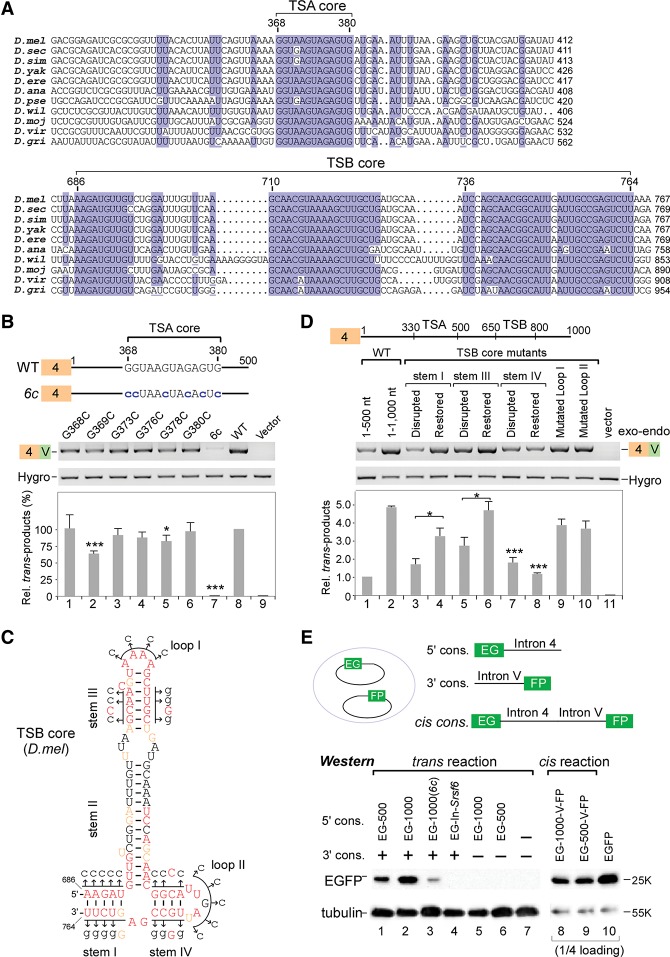Figure 2.
Mutations in the highly conserved RNA motifs of intron 4 significantly decrease trans-splicing activity. (A) TSA and TSB contain highly conserved core motifs across Drosophila species. For sequence alignment of the full-length intron 4, see Supplemental Figure S2. (B) Mutations in the TSA core motif significantly decrease trans-splicing activity. Relative trans-spliced products were normalized to loading controls and the wild-type (WT) intron 4. Mean ± SEM; n = 3; (*) P < 0.05; (***) P < 0.001. (C) Highly conserved secondary structure of TSB core RNA from D. melanogaster. (Red) 100% conservation; (brown) >75% conservation; (black) <75% conservation. Mutated sites used in D are indicated by arrows here. For structures of TSB cores in other Drosophila species, see Supplemental Figure S3. (D) Secondary structures of stems I and III in the TSB core are required for enhancing trans-splicing activity. Mutated sites are indicated in C. Relative activities were normalized to loading controls and the wild-type intron 4 (1–500 nt). Mean ± SEM; n = 3. (E) Validation of trans-splicing at the protein level. The coding sequence (CDS) of EGFP is split into two halves (EG and FP) followed by intronic sequences; trans-spliced products were detected by Western blot using anti-EGFP antibody. (EG-500) Exon EG with 1–500 nt of intron 4; (EG-1000) exon EG with 1–1000 nt of intron 4; (6c) all six Gs are mutated to Cs in the TSA core; (In-Srsf6) 1–548 nt of Srsf6 intron 4. Cis-splicing constructs were used as controls.

